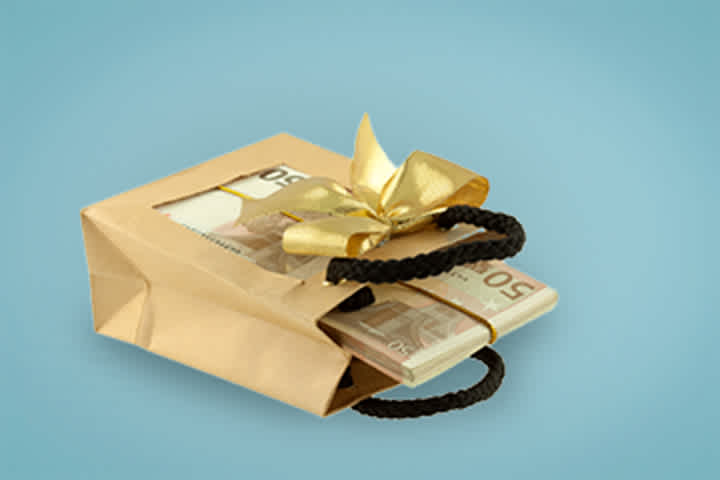How safe are contactless payments?
Keytrade Bank
keytradebank.be
June 17, 2019
4 minutes to read
You have all seen this icon. It says that you can pay contactless. Still, is this as safe as the classic method where you put your card inside the payment terminal? Let’s find out.
What is contactless payment?
With contactless payment, you simply hold your bank card or smartphone against the payment terminal. You no longer have to insert your card in the terminal's slot or enter your PIN. This technology is suitable for payments up to 25 euros. You have to enter your PIN for higher amounts.
How does it work?
Contactless payment uses Near Field Communication (NFC), a system based on radio waves. A bank card or smartphone with an NFC chip can communicate with a payment terminal equipped with this technology.
Is it safe?
Stories about how easily thieves can steal money from this card regularly surface. Carrying a payment terminal hidden in a backpack or newspaper, thieves try to get as close to your card or smartphone as they can. In this way the thief is allegedly able to steal up to €25 from your account, without you noticing it.
Although consumer organisation Test Aankoop has demonstrated that it is possible to steal money in this way, it does not happen in practice. Despite the fact that contactless cards have been around since 2011, there have been no reports of theft with this technology.
The lengths a thief has to go to are disproportionate to the limited 'return'. Because these are electronic transactions, the fraudster's account number can also be traced. In practice, the scenario with the 'payment terminal in the newspaper' is highly unlikely. Fraud involving contactless payment cards is due to loss or theft of the card.
What protection mechanisms are in place to make it difficult for fraudsters?
- The maximum distance between the card or smartphone and the payment terminal is limited to 3-4 cm. This significantly reduces the risk of unintended payments.
- After a number of payments, you are required to enter your PIN. As soon as you have made contactless payments totalling €50, you will have to enter your PIN with your next payment.
- Contactless transactions are processed in the same way as normal transactions. This means they can easily be traced in case of fraud.
- The NFC technology does not make it any easier for fraudsters to copy the card. The chip in the card generates unique and encrypted data for each payment, which makes counterfeiting very difficult. If a fraudster fakes your card and tries to make a transaction with the same number, the transaction is refused.
- Payment cards never store information about your address or contact details.
Can I make contactless payments with my card or smartphone?
All new debit cards issued by Keytrade Bank are equipped with NFC technology as standard. You can easily recognise these cards by the symbol with four radio waves. Most payment terminals are now also equipped with this technology (also identifiable by the same symbol).
When using your contactless payment card for the first time, you have to enter your PIN the first time you make a payment.
If you have an older card without the contactless payment logo, you can contact customer service on +32 (0)2 679 90 00 to order a new card. As a customer of Keytrade, you can also use Bancontact's Payconiq payment app for making mobile payments using a QR code, both in shops and webshops and between friends.
Can I disable this function?
YouTube has instruction videos on how to disable the function with a sharp knife and a soldering iron. Fortunately there’s a much easier way at Keytrade Bank. To deactivate the functionalities of contactless payment and payment without a PIN, simply call our customer service department on +32 (0)2 679 90 00.
What about the future?
Today we are all very familiar with digital payments – in Belgium, we used our cards to make 1.9 billion payments in 2018. The number of contactless payments is also increasing as more and more payment cards have the NFC chip.
Although bank cards are the standard means of payment today, any object equipped with an NFC chip can assume the function of a payment card. A smartwatch, bracelet, ring or key for example. But also devices like subcutaneous chips, a method that is on the rise in Sweden and elsewhere.
And the distant future? Perhaps this will be a future in which we no longer need any cards, rings, chips or other devices. It may be that our bodies will have a payment function, such as a fingerprint or iris scan. To be continued!


